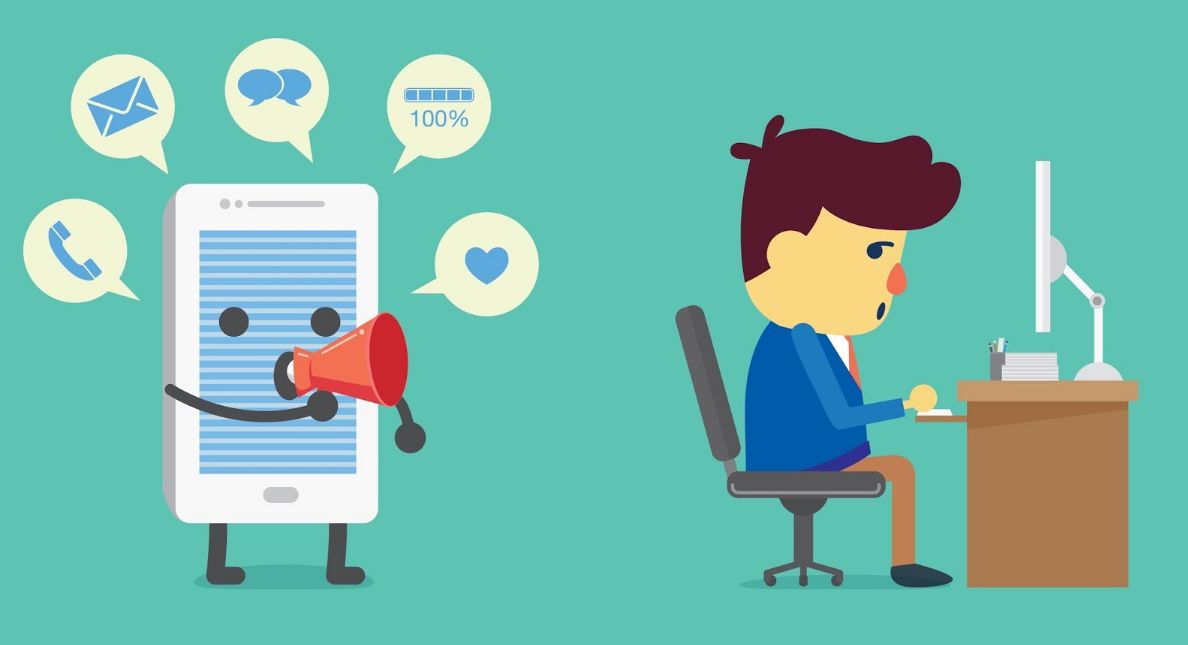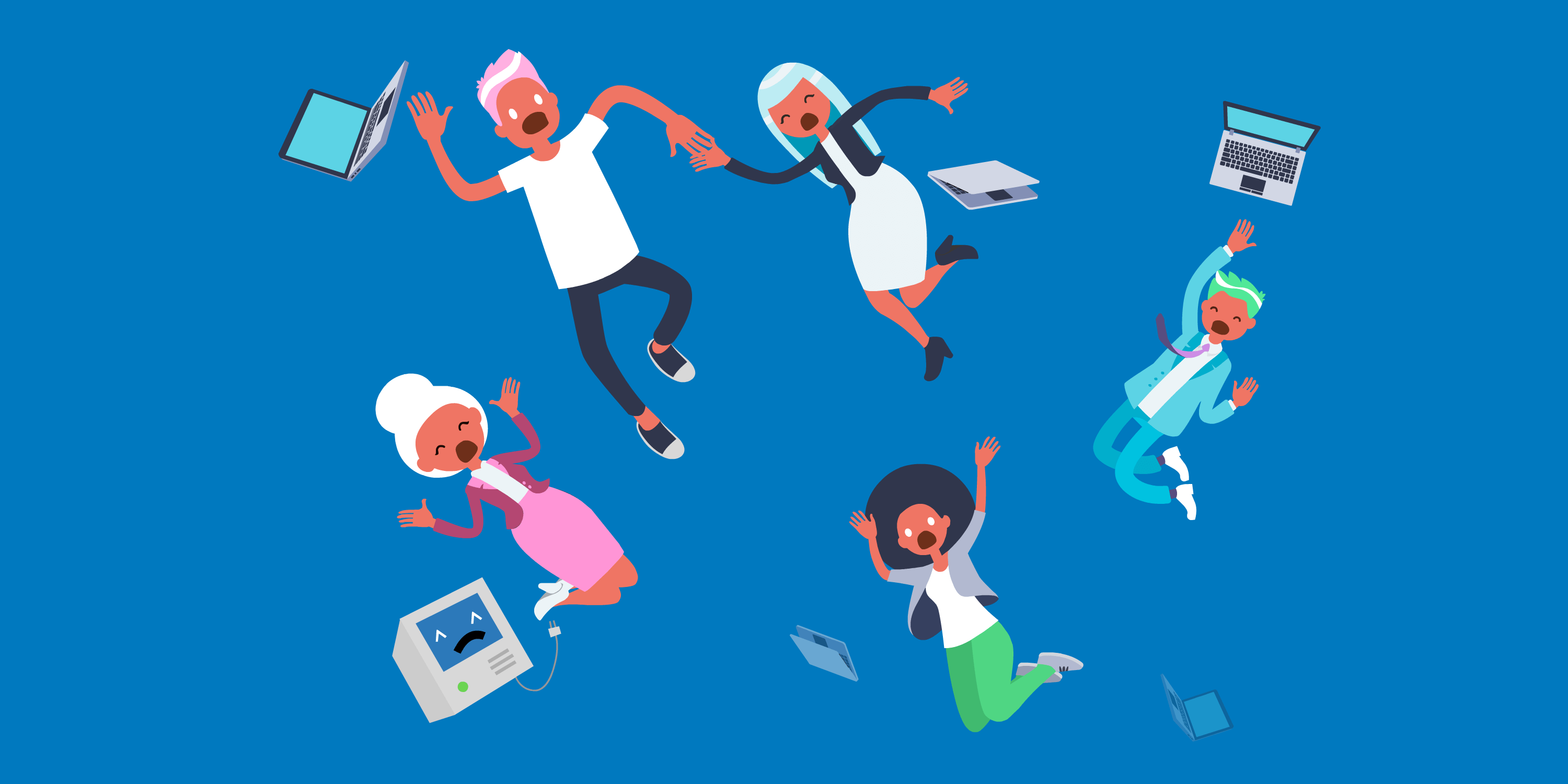5 Strategies to Get More Deep Work Time
Learn what is the difference between deep work and shallow work and create your own deep work routine by minimizing shallow work and distractions.
Multitasking and interruptions are stealing our focus time, and deep work state. Read more about turning off digital notifications and distractions.
We interviewed tech leaders about distractions, focus time, and deep work in engineering teams. They were united that an engineering team needs an environment free of distractions, where they can both focus on the work at hand, and collaborate with other teams, but not at the same time.
The first in line was Nick Melis, Founder & CTO at Cloudfle, whose business is all about cracking engineering team productivity. Later on, we spoke to Petri Lehtonen, our CEO at Flowtrace, about the struggles of technology companies to remove notifications and de-distractify work. The leaders seemed to wrestle with the same topics.
According to Nick Melis, in software engineer work, "80% of the work happens when you get into a flow state to concentrate and actively use your short term memory". This flow state is achieved during focus time, or deep work time. This comic by Jason Heeris highlights how easily notifications and distractions interrupt that flow.

If other departments aren't familiar with the nature of active logical thought patterns of engineering work, they won't necessarily appreciate the importance of developers having time to focus on proper deep work.
Deep work is a concept by Cal Newport, author and professor of computer science. This is the state where you can focus without distraction on a cognitively demanding task i.e. when you’re really locked into doing something hard with your mind. Deep work is usually the most valuable work an employee does. Admin work, like answering emails, scheduling meetings and logging activities, doesn't require as deep concentration, so Cal Newport calls it shallow work. If your schedule is dominated by shallow work, you’ll never find time to do the deep efforts that really move the needle.
Melis estimates that as much as 50% of a CTO's job is getting rid of distractions and notifications:
"As a leader, your most important job is to make it possible for others to do their best. This includes having the right tools, and seeing that people don't have too much on their plate, and importantly, removing distractions and automatic notifications. If someone comes up to you and says 'I can't work in all this noise', it is your job to fix the issue. And you can't push back all the time and make it someone else's problem. I remember, sometimes people would work in the kitchen to get away from the noise. That's no way to work."
Open offices create many physical distractions, especially with other departments around – the sales team talking next to you, the CEO wandering around, clients running in and out, noisy meetings. Then there are digital distractions that are harder to run away from like constantly popping notifications and checking various inboxes and tools. Constant distractions reduce your cognitive capacity creating a psychological effect called attention residue, which is detrimental to knowledge work.
 Petri Lehtonen, CEO of Flowtrace, notes that shutting off or snoozing your collaboration tools is not as simple as it is made out to be:
Petri Lehtonen, CEO of Flowtrace, notes that shutting off or snoozing your collaboration tools is not as simple as it is made out to be:
"It takes conscious action to disable notifications and it is always time-limited i.e. snoozed. Distractions creep in no matter how diligent you are, unless you go fully offline, and many developers need the online access for their work so are loath to turn off all their collaboration tools and notifications multiple times a day".
According to a study by Gloria Mark from UC Irvine, who studies digital distraction, it takes an average of about 25 minutes to return to your original task after an interruption (23 minutes and 15 seconds, to be exact). If someone interrupts you every hour, you've basically lost half of your day. You are constantly switching your attention from one target to another and then back again; multitasking, not focusing.

It's a common saying that younger generations (Gen Y aka millennials and Gen Z) are more adept at multitasking since they have grown up with constant digital distractions. Most experts have still not found conclusive evidence of anyone, young or old, being more efficient because of multitasking.
Melis believes that in 80-90% of cases, it is the manager's responsibility to make people's work life easier and get rid of those distractions. The individual's responsibility is their work, not its facilitation: "Extreme multitasking is not beneficial for anyone. We're not machines, we have to be able to concentrate on one thing at a time. We owe it to our employees to get rid of distractions."
Lehtonen condemns multitasking outright as a productivity myth. It is a persistent one, which he has run often into with the wider C-suite:
"Multi-tasking is a productivity evil - it steals your focus when you are supposed to collaborate, in meetings and brainstorming sessions. People are not good at it – no one is – but somehow people think they are signalling they are really productive."
If 80% of engineer time is deep work, the other 20% is collaboration e.g. sketching ideas together, or taking part in planning and sprint meetings. According to Melis, collaboration can easily devolve into a time-consuming debate on irrelevant issues. There should be a time and a place for other topics to be discussed. Having a clear agenda maintains a spirit of interdepartmental collaboration while avoiding unnecessary "brain sprawling". Everyone should know what the matter at hand is, what outcomes should be gotten out of it, what the next steps are, and if there are issues to be tabled for another time. This way you're not wasting anyone's valuable time.

Remote work especially has changed the way people are communicating with each other and the nature of distractions. At home you are not at the mercy of office distractions, so you would assume the situation is more manageable. Working from home brings its own distractions of course in the form of family, roommates, and home deliveries, so it requires its own home office hygiene. Video meetings are seldom ad hoc, so there is usually an agenda in place and a clearer schedule for the day. Melis' experience is that when people are allowed to work from home, and there is no tracking in place, people tend to work and communicate even more to prove they are working. This tips the balance more towards digital distractions.
According to Melis and Lehtonen, there are some clear steps you can take as a CTO to remove digital distractions for your engineers.
Make it very clear that everyone needs to be able to focus. Take time to observe, ask, and listen to what is causing distractions. If people are constantly pestering random developers, the manager needs to step in and create a process for them to go and ask managers first.
"If you have a management role, people are coming to you throughout the day to tap you on your shoulder. The more you move up, the more distractions you have to take into account."
Melis talks of a balance between chaos and rigidity that you need to find. Startups are agile by nature and a certain unruliness comes with the free collaboration it entails. Then again, you have to have processes, not chaos, because things start to devolve into "pure anarchy". That's why it's very useful to have tools in place to find that balance and see where the situation is.
"As managers, we just need to make sure that people have the means to collaborate, communicate when they want to, and work distraction-free when they need to. "
"If you have 10 developers each one is going to all ask the same questions every time, so you need to have everything written down in one place."
Before collaboration tools, you had emails, tons of threads and discussions. Slack, Teams, etc. have been great for getting rid of those. However, in many instant messaging tools, the information can get lost in the constantly updating feed. This leads to people asking each other about previous discussions and where they can find the relevant information. A standardised way of documenting the takeaways of discussions and a way to locate them is essential. People should be instructed to find information themselves, instead of asking each other every time. Melis has a general rule of thumb for would-be-distractors: "if you have a question, google it first".
Keeping track of focus time and the distraction-free deep work that engineers have is possible by tracking collaboration data with a tool like Flowtrace. You can keep track of the amount of multitasking (e.g. the use of messaging tools while attending meetings). Melis thinks it is especially crucial the bigger a company grows to have a view of what's happening between teams.
"You can have 20-30 people tops, to organically have a feeling of where the time is wasted and where processes are needed. It's when you scale to 100 people things start to go awry. You need a measuring tool in place or you are blind. If you have no processes to see how people communicate, it's all going hell."
After the pandemic, we have all had a taste of 100% remote work and the different ways we can communicate, creating company culture, share information, and work on common goals with fewer distractions. As Adam Grant writes in the Economist, if we were to solve the problem of balancing out deep work and collaboration, perhaps with the new normal of remote work, we could achieve the vision of greater job satisfaction, more ethical leadership, a deeper sense of trust and the holy grail of shorter working days: “We can be every bit as creative and productive in six focused hours a day as in twice as many distracted hours.”
If you are interested in reducing distractions to deep work, seeing where the interruptions are coming from, and keeping track of multitasking, try out Flowtrace's free account. We map out the collaboration networks in your organization and recommend ways to improve the flow of internal knowledge.
Learn what is the difference between deep work and shallow work and create your own deep work routine by minimizing shallow work and distractions.
Discover the importantce of focus-time, why, and how to get more focus-time! Benefits of focus-time are clear for individual, team, and companies.
We reveal the importance of focus in the workplace and provide insights into the consequences of employees struggling to focus.